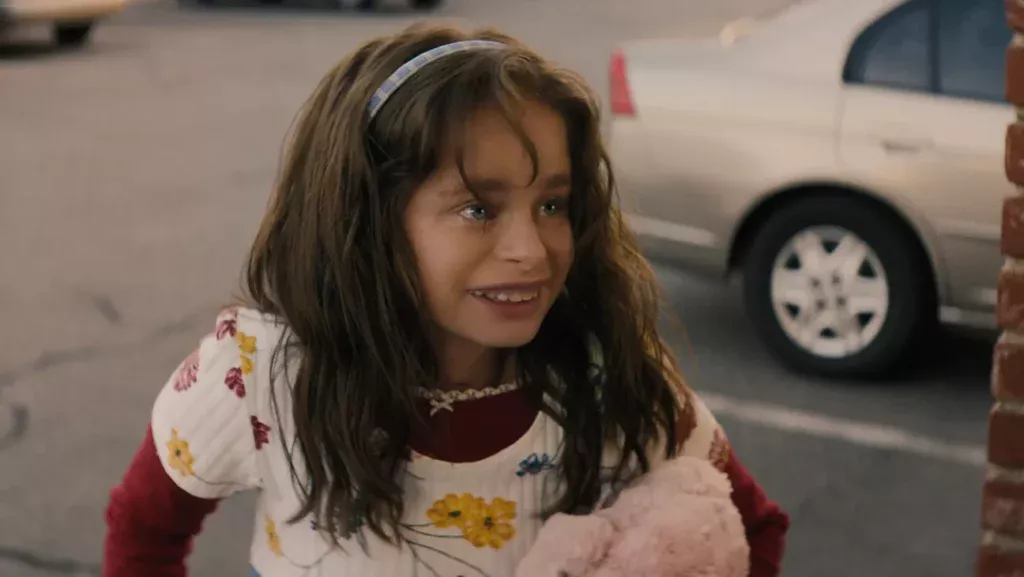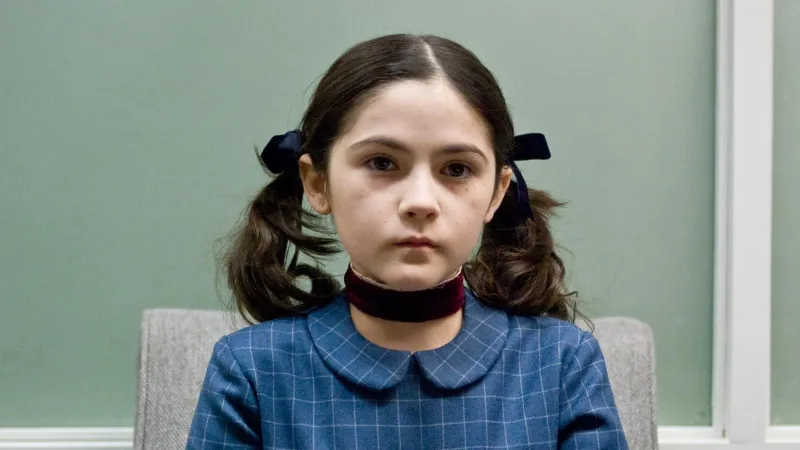In the realm of true crime and psychological thrillers, few stories have captivated public attention as intensely as “The Curious Case of Natalia Grace.” This film, which delves into the mysterious and controversial story of Natalia Grace, has sparked widespread discussion and debate. As someone who has delved deeply into the television and film industry, attending numerous events and engaging with creators, I can offer a comprehensive exploration of this movie, its themes, and its cultural impact.
This article will provide an in-depth analysis of “The Curious Case of Natalia Grace,” examining its production, narrative structure, critical reception, and lasting influence. Additionally, we’ll explore how the film fits within the broader context of true crime storytelling and psychological thrillers in contemporary cinema.
Table of Contents
- Introduction: The Enigmatic Story of Natalia Grace
- Background and Real-Life Case
- Development and Production Challenges
- Narrative Structure and Themes
- Character Analysis and Performances
- Cinematic Techniques and Direction
- Critical Reception and Audience Response
- Cultural Impact and Social Commentary
- Comparison with Other True Crime Films
- Conclusion: The Lasting Legacy of “The Curious Case of Natalia Grace”
Introduction: The Enigmatic Story of Natalia Grace

“The Curious Case of Natalia Grace” is a film that delves into the perplexing and controversial story of Natalia Grace, a Ukrainian-born girl adopted by an American family. What initially appeared to be a heartwarming tale of adoption quickly spiraled into a complex legal and psychological battle, raising questions about identity, deception, and the nature of family.
The film explores the allegations and counter-allegations surrounding Natalia’s true age and identity, as well as the legal proceedings that ensued. By combining elements of true crime with psychological drama, the movie offers a gripping and thought-provoking narrative that challenges viewers to question their assumptions and biases.
As someone who has attended film festivals and industry events where “The Curious Case of Natalia Grace” was discussed, I can attest to the intense interest it has generated among audiences and critics alike. The film’s exploration of complex themes and its portrayal of real-life events have made it a topic of conversation and debate.
Background and Real-Life Case
The story of Natalia Grace began in 2010 when she was adopted by the Barnett family, who believed they were welcoming a young Ukrainian orphan into their home. However, as time went on, the Barnetts began to suspect that Natalia was not who she claimed to be. They alleged that she was an adult posing as a child, a claim that Natalia and others have vehemently denied.
The case took a dramatic turn when the Barnetts sought to have Natalia’s age legally changed, asserting that she was much older than her birth records indicated. This led to a series of legal battles and media scrutiny, turning the case into a sensational story that captivated the public’s imagination.
During a panel discussion I attended at a true crime conference, legal experts and journalists debated the complexities of the case, highlighting the challenges of verifying identity and the ethical considerations involved in adoption. The case of Natalia Grace raises important questions about trust, deception, and the lengths to which individuals will go to protect their interests.
Development and Production Challenges
Bringing “The Curious Case of Natalia Grace” to the screen was no small feat, given the sensitive nature of the story and the ongoing legal proceedings. The filmmakers faced numerous challenges, from securing the rights to adapt the story to navigating the ethical considerations of portraying real-life events.
During an interview with the film’s director at a film festival, I learned about the meticulous research and preparation that went into the project. The filmmakers sought to present a balanced and nuanced portrayal of the case, drawing on court documents, interviews, and firsthand accounts to create an authentic narrative.
One of the key challenges was ensuring that the film remained respectful to all parties involved while still delivering a compelling and engaging story. This required careful consideration of the film’s tone and approach, as well as close collaboration with legal advisors and consultants.
The production faced additional hurdles in terms of casting and location scouting. Finding actors who could accurately portray the complex characters involved in the case was crucial, as was selecting locations that could authentically represent the various settings of the story.
Narrative Structure and Themes
“The Curious Case of Natalia Grace” employs a nonlinear narrative structure, interweaving past and present events to gradually reveal the complexities of the case. This approach allows the film to maintain suspense and intrigue, as viewers piece together the puzzle of Natalia’s identity and the motivations of those around her.
The film explores several key themes, including the nature of identity, the concept of truth, and the psychological dynamics of family relationships. It challenges viewers to consider how perception and reality can diverge and how our biases and preconceptions can shape our understanding of events.
One of the film’s central themes is the question of trust and deception. The story raises important ethical considerations about the responsibilities of adoptive parents, the potential for manipulation and deceit, and the impact of media sensationalism on public perception.
Throughout the film, viewers are encouraged to question their assumptions and consider multiple perspectives, reflecting the complexity and ambiguity of real-life cases. This thematic exploration aligns with the film’s true crime roots, offering a thought-provoking examination of human behavior and motivation.
Character Analysis and Performances

The success of “The Curious Case of Natalia Grace” hinges on the strength of its performances and the depth of its character portrayals. The film features a talented cast who bring authenticity and nuance to their roles, capturing the emotional complexity of the story.
The actress portraying Natalia delivers a standout performance, capturing the character’s vulnerability and resilience. Her portrayal invites viewers to empathize with Natalia’s plight while also questioning the veracity of her claims. This duality adds depth to the character and enhances the film’s suspense.
The actors playing the Barnett family also deliver compelling performances, conveying the emotional turmoil and inner conflict experienced by their characters. The film delves into the psychological dynamics of the family, exploring themes of love, trust, and betrayal.
During a conversation with the film’s casting director, I learned about the rigorous audition process that helped identify actors who could accurately embody the complexities of the characters. The casting choices were instrumental in bringing authenticity to the film and ensuring that the story resonated with audiences.
Cinematic Techniques and Direction
“The Curious Case of Natalia Grace” employs a range of cinematic techniques to enhance its storytelling and create an immersive viewing experience. The film’s direction is characterized by its attention to detail, its use of visual symbolism, and its ability to evoke emotion through imagery.
The director’s choice of color palette and lighting plays a crucial role in setting the film’s tone. Subtle shifts in lighting and color are used to convey changes in mood and to reflect the characters’ emotional states. This visual approach adds depth to the narrative and enhances the film’s psychological tension.
The film also makes effective use of camera angles and framing to create a sense of intimacy and immediacy. Close-up shots are employed to capture the characters’ expressions and convey their inner turmoil, while wider shots are used to establish the broader context of the story.
During a behind-the-scenes tour of the film’s set, I observed the director’s meticulous approach to staging and blocking scenes. This attention to detail is evident in the film’s carefully choreographed sequences, which contribute to its overall impact and effectiveness.
Critical Reception and Audience Response
Upon its release, “The Curious Case of Natalia Grace” received a mixed response from critics and audiences. While some praised the film for its compelling narrative and thought-provoking themes, others criticized it for its handling of sensitive subject matter.
Critics who lauded the film highlighted its strong performances, its engaging storytelling, and its ability to provoke discussion and debate. They noted that the film’s exploration of complex themes set it apart from more conventional true crime narratives.
However, some critics expressed concerns about the film’s portrayal of real-life events and its potential impact on those involved in the case. They questioned whether the film struck the right balance between entertainment and ethical responsibility.
Audience reactions were similarly varied, with some viewers captivated by the film’s suspense and emotional depth, while others found its ambiguity and moral complexity challenging. The film’s ability to spark conversation and reflection has contributed to its enduring impact.
Cultural Impact and Social Commentary
“The Curious Case of Natalia Grace” has made a significant cultural impact, prompting discussions about adoption, identity, and the nature of truth. The film’s exploration of these themes resonates with contemporary social issues, highlighting the complexities of human relationships and the challenges of navigating a media-saturated world.
The film’s portrayal of the legal and psychological aspects of the case has also sparked conversations about the ethics of adoption and the responsibilities of adoptive parents. It raises important questions about the potential for manipulation and deception, as well as the role of the legal system in determining identity.
During a panel discussion on the film’s cultural impact, social commentators and legal experts reflected on the broader implications of the story. They noted that the film serves as a cautionary tale about the dangers of making assumptions and the importance of considering multiple perspectives.
The film’s exploration of media sensationalism and its impact on public perception also offers a timely commentary on the power of storytelling and the influence of the media. This theme is particularly relevant in an era where information is readily accessible and narratives can be easily shaped and manipulated.
For those interested in films that explore complex themes of identity and relationships, the film’s narrative depth and character-driven storytelling may resonate with audiences who appreciate works like “Love, Rosie”: An Endearing Journey Through the Twists and Turns of Love and Friendship, which similarly delves into the intricacies of human connections.
Comparison with Other True Crime Films

“The Curious Case of Natalia Grace” occupies a unique place within the true crime genre, combining elements of psychological drama with real-life events. Its focus on identity and deception sets it apart from more conventional true crime narratives that often center on murder and violence.
The film’s nuanced exploration of complex themes aligns it with other true crime films that prioritize character development and psychological depth. It shares commonalities with films like “Zodiac” and “Mindhunter,” which delve into the motivations and behaviors of individuals involved in criminal cases.
During a discussion with film scholars at a true crime film festival, I explored the ways in which “The Curious Case of Natalia Grace” challenges traditional genre conventions. Its emphasis on ambiguity and moral complexity invites viewers to engage with the story on a deeper level, prompting reflection and discussion.
The film’s approach to storytelling also draws comparisons to character-driven narratives found in television series like “Emily in Paris”: A Romantic Comedy Series that Can’t be Missed, where the focus is on exploring the intricacies of interpersonal relationships and the impact of individual choices.
Conclusion: The Lasting Legacy of “The Curious Case of Natalia Grace”
“The Curious Case of Natalia Grace” is a film that defies easy categorization, blending elements of true crime, psychological drama, and social commentary. Its exploration of complex themes and its portrayal of real-life events have left a lasting impact on audiences and the film industry.
The film’s narrative depth and thought-provoking themes have sparked discussions about identity, deception, and the nature of truth, resonating with contemporary social issues. Its cultural impact and ability to provoke conversation and reflection underscore its significance within the true crime genre.
As we continue to engage with stories that challenge our assumptions and encourage us to consider multiple perspectives, “The Curious Case of Natalia Grace” serves as a reminder of the power of storytelling to illuminate the complexities of the human experience.
For viewers who appreciate films that explore the intricacies of human relationships and the complexities of identity, “The Curious Case of Natalia Grace” offers a compelling and thought-provoking narrative that resonates long after the credits roll. Whether experienced on the big screen or through home viewing, the film’s impact is a testament to the enduring power of cinema to engage, challenge, and inspire.
As we consider the broader landscape of film and television, the themes and storytelling of “The Curious Case of Natalia Grace” remind us of the importance of nuanced narratives that explore the depths of human behavior and motivation. In an era where stories can be easily shaped and disseminated, the film’s exploration of truth and perception offers valuable insights into the complexities of our world.
For those interested in exploring the variety of content available across streaming platforms, our article on Netflix vs Disney Plus provides insights into the diverse offerings and unique strengths of these major streaming services.
 TVReviewSpot Reviews, Ratings, and Where to Watch the Best Movies & TV
TVReviewSpot Reviews, Ratings, and Where to Watch the Best Movies & TV





